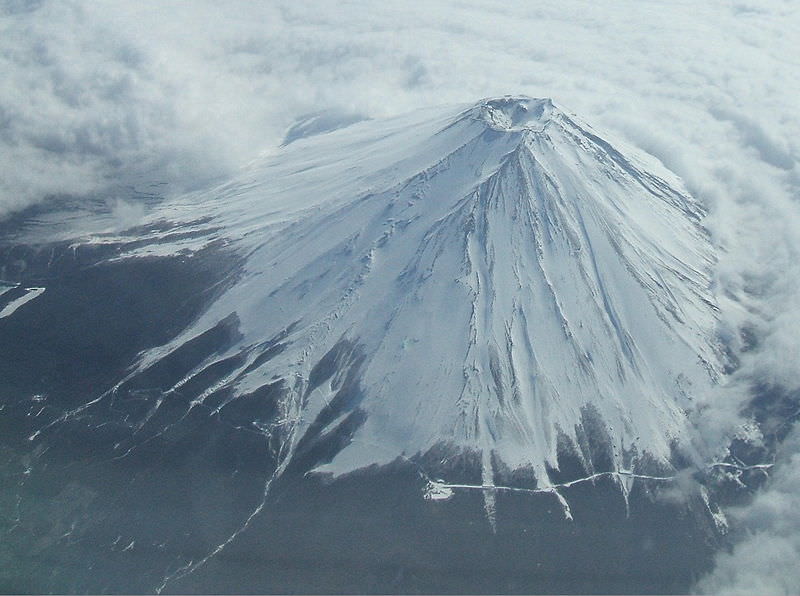[/caption]
The iconic Mount Fuji is the highest mountain in Japan, and an active stratovolcano that last erupted in 1708. It can be seen from the city of Tokyo on a clear day off to the west. It stands at an elevation of 3,776 meters and is surrounded by 5 lakes.
Mount Fuji probably started erupting several hundred thousand years ago. The interior of the mountain is an andesite core that erupted first. over top of that is a basalt layer that probably erupted a few hundred thousand years ago. About 100,000 years ago, a new layer called “Old Fuji” covered that. And now the newest layer is known as, surprisingly, “New Fuji”, forming about 10,000 years go. Fuji is located at the point where the Eurasian Plate, the Okhotsk Plate and the Philippine Plate meet.
The last recorded eruption of Mount Fuji was on December 16, 1707. Eruptions lasted until January 1, 1708, with cinders and ash raining down on villages surrounding the mountain. And since then, the mountain has been quiet.
It’s believed that Mount Fuji was first climbed by a monk in 663, and the first foreigner was Sir Rutherford Alcock in September 1860. Today an estimated 200,000 people climb Mount Fuji every year. The ascent takes about 8 hours, and the descent takes just 2-3 hours to come back down.
We have written many articles about volcanoes for Universe Today. Here’s an article about other famous volcanoes, and here’s an article about Mount Pinatubo.
Want more resources on the Earth? Here’s a link to NASA’s Human Spaceflight page, and here’s NASA’s Visible Earth.
We have also recorded an episode of Astronomy Cast about Earth, as part of our tour through the Solar System – Episode 51: Earth.

